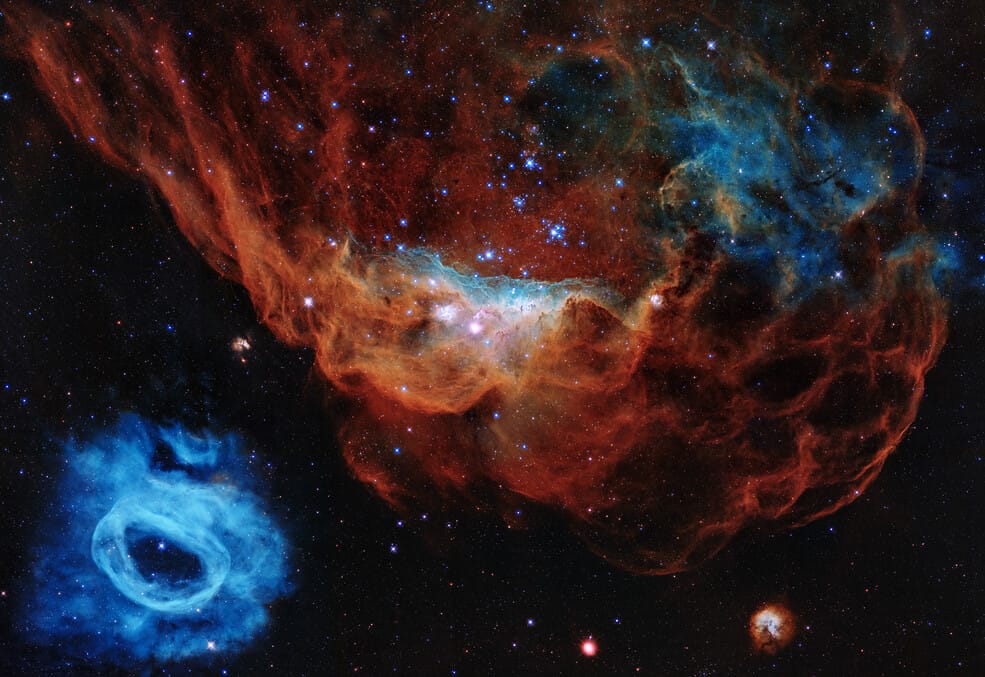The Universe's Speed Limit Mystery: Why Scientists Can't Agree on Cosmic Expansion
The cosmos is expanding—but exactly how fast remains one of astronomy's most perplexing puzzles. Despite decades of sophisticated measurements and Nobel Prize-winning research, scientists are embroiled in what they call the "Hubble tension," a fundamental disagreement about the rate at which our universe is growing. This isn't just an academic squabble; it could signal that our understanding of the universe's most basic properties needs a complete overhaul.
The Tale of Two Measurements
At the heart of this cosmic controversy lies the Hubble constant—a number that describes how quickly space itself is expanding. Named after astronomer Edwin Hubble, who first discovered the universe's expansion in 1929, this constant should be, well, constant. Yet two primary methods for measuring it consistently yield different answers, creating a scientific standoff that has persisted for years.
The first approach uses the cosmic microwave background (CMB)—ancient light left over from when the universe was just 380,000 years old. The European Space Agency's Planck satellite, which measured this primordial radiation with extraordinary precision, suggests the Hubble constant is approximately 67.4 kilometers per second per megaparsec. This means that for every 3.26 million light-years of distance, space expands by about 67.4 kilometers per second.
The second method relies on observations of nearby galaxies and supernovae—stellar explosions that serve as cosmic "standard candles" because of their consistent brightness. This approach, championed by researchers using the Hubble Space Telescope and other instruments, consistently produces a higher value of around 73-74 km/s/Mpc.
Why This 9% Difference Matters
A 9% discrepancy might seem trivial, but in cosmology, precision is everything. This difference has profound implications for our understanding of the universe's age, composition, and ultimate fate. If the higher measurement is correct, the universe would be younger than we thought—perhaps 12.8 billion years old instead of the currently accepted 13.8 billion years.
More troubling for scientists is what this tension might reveal about the fundamental physics governing our cosmos. "If these measurements are both correct, then there's something we don't understand about the universe," explains Dr. Adam Riess, a Nobel laureate who has led many of the supernova-based measurements.
Proposed Solutions and New Physics
The scientific community has proposed various explanations for the Hubble tension, each more intriguing than the last:
Early Dark Energy
Some researchers suggest that dark energy—the mysterious force driving cosmic acceleration—might have behaved differently in the early universe. This "early dark energy" could have given expansion an extra boost, reconciling the conflicting measurements.
Modified Gravity
Others propose that Einstein's general relativity might need tweaking on cosmic scales. Modified gravity theories could explain why different measurement methods yield different results while preserving our successful models of stellar and planetary physics.
Exotic Particles
The existence of undiscovered particles or forces could also resolve the tension. Some theories invoke "dark radiation" or sterile neutrinos that would alter how energy moves through the early universe.
Measurement Errors
The most conservative explanation is that systematic errors in one or both measurement techniques are creating an apparent discrepancy where none exists. However, both methods have been refined and cross-checked extensively, making this explanation increasingly unlikely.
The Race for Resolution
Recent observations have only deepened the mystery. The James Webb Space Telescope has provided unprecedented views of distant galaxies, confirming many Hubble Space Telescope measurements with even greater precision. Meanwhile, new ground-based surveys and gravitational wave detectors offer additional ways to measure cosmic expansion, though these haven't yet resolved the tension definitively.
The European Space Agency's upcoming Euclid mission and NASA's Roman Space Telescope promise to shed new light on this puzzle. These next-generation instruments will measure distances to billions of galaxies with unprecedented accuracy, potentially breaking the current stalemate.
What This Means for Our Cosmic Understanding
The Hubble tension represents more than just a measurement problem—it's a window into the fundamental nature of reality. If confirmed, the discrepancy could herald the discovery of new physics, potentially revolutionizing our understanding of dark matter, dark energy, or the very fabric of spacetime.
For now, astronomers continue their meticulous work, refining measurements and exploring new techniques. The resolution of this cosmic mystery may well define the next chapter in our quest to understand the universe's deepest secrets. Whether it leads to Nobel Prizes or a complete rewrite of cosmology textbooks, one thing is certain: the universe still has surprises in store.
